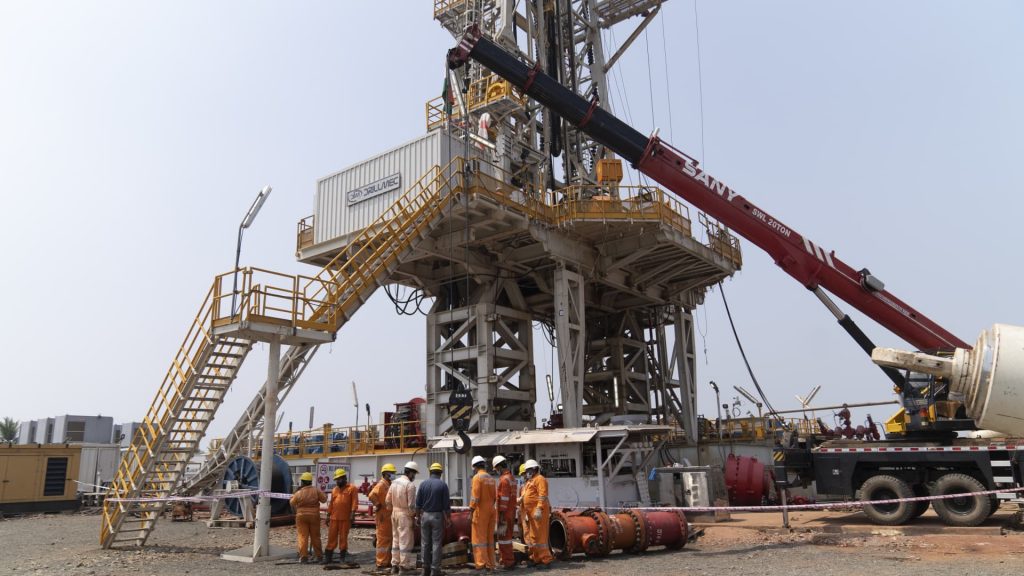What the rise in natural gas prices means for 3 of our energy stocks
With natural gas prices in the U.S. and around the globe off the charts high, we’re looking at what that means for our energy stocks. Early Tuesday, U.S. natural gas surged to 14-year highs — over $10 per million British thermal units. But it turned sharply lower later and settled down about 4% at just over $9 after the expected restart of a shuttered liquefied natural gas plant was pushed back. That will keeping more gas in the U.S. for longer, boosting supply here, instead of exporting it. Tuesday’s move was certainly a wild ride, but U.S. natural gas prices are still up about 12% month to date and more than 154% year to date. There are a number of domestic and global factors keeping prices elevated, including disruptions from Russia’s war against Ukraine prompting concern about shortages in Europe. Here’s the breakdown of natural gas as a percentage of commodity sales in the second quarter for our three pure oil-and-gas exploration and production companies — Coterra Energy (CTRA), Devon Energy (DVN) and Pioneer Natural Resources (PXD) — and our take on the potential for bigger and bigger things. Coterra Energy Natural Gas: $1.47 billion or 56% Oil: $876 million or 33% Natural gas liquids: $280 million or 11% The independent oil and gas producer gets more than half of its revenues from natural gas, which it sells to industrial players, local distribution as well as major energy companies. Natural gas is becoming an important resource for U.S. producers to supply the liquified natural gas market. We are bullish on natural gas because Europe is strapped for it as the ongoing war in Ukraine hampers production. Also, if oil were to fall further from this year’s highs, it would a safe bet to have a name like Coterra. Energy companies tend to use hedges as a way for them to protect against commodity price volatility. While this helps on the downside, it can also preclude producers to benefit from the upside of rising commodity prices. According to Coterra’s latest 10-Q Securities and Exchange Commission filing: “A significant portion of our expected oil and natural gas production for 2022 and beyond is currently unhedged and directly exposed to the volatility in oil and natural gas prices, whether favorable or unfavorable.” We sold some shares of Coterra Energy Monday into strength, to manage our energy exposure. CTRA has been following the direction of natural gas higher, with the stock up about 58% year-to-date. Another reason we like Coterra is for its ability to return cash to shareholders in the form of dividends. In its second quarter results , reported on Aug. 2, the company’s total quarterly dividend of 65 cents per share, which represented a return of 58% of second quarter 2022 cash flow from operating activities, according to the company . Coterra gets all of its revenue from the U.S . Devon Energy Natural Gas: $557 million or 13% Oil: $2.97 billion or 72% Natural gas liquids: $573 million or 14% Devon Energy is a leading oil and gas exploration and production company, which derives 100% of its revenue from the U.S. Most of its business is in oil — but in its second quarter earnings, Devon increased investments in upstream, or exploration and production activities, in the range of $2.2 billion to $2.4 billion in 2022, which includes both crude oil and natural gas. According to Devon’s latest 10-Q SEC filing, “We currently have approximately 25% and 30% of our anticipated remaining 2022 oil and gas production hedged, respectively.” Devon has provided consistent high quality cash flow that includes a model for increasing dividends and share repurchases to return to shareholders, which are among key reasons why we own the stock. While the price of oil has been volatile, falling from its late June $120 per barrel highs to about $93 per barrel on Tuesday, Devon CEO Rick Muncrief told Jim Cramer in an interview earlier this month that the drop in oil will be offset by oil demand this year. As natural gas continues to go up in price Devon can reap the benefit and add to its profitability. Pioneer Natural Resources Natural Gas: $494 million or 11% Oil: $3.5 billion or 75% Natural gas liquids: $644 million or 14% Pioneer is exporting its natural gas and building out more pipelines but CEO Scott Sheffield told Cramer in an interview this month that Pioneer has held back on LNG for now. “The biggest issue for us is that the next set of LNG plants are 2027, 2028. They want to sign a 15-year contract. So, we have to guess what [are natural gas prices] going to be from 2028 to 2043. … So far we’ve held back but eventually we’ll probably do something.” While Pioneer has 11% of its business in natural gas, we see the company benefitting from the strength of natural gas prices if it were to increase gas exports. With the U.S.’s shortage in natural gas supply, there is ample production opportunity for Pioneer to participate in. Sticking with the hedging or not to hedged trend among our energy companies, Pioneer decided late last year to take off most of their hedges for 2022 to provide upside in high commodity prices. We hold Pioneer because it has remained committed to returning money to shareholders through its dividend, which is the highest yielder in the S & P 500. In its second quarter Pioneer delivered more than 95% of free cash flow to shareholders through its base-plus-variable dividend. PXD is also fully domestic revenue-wise. Bottom line We are still overweight energy because it’s a good hedge against inflation and Coterra, Devon and Pioneer pay us to hold their stocks in the form of stellar capital return programs. We have benefitted from the oil trade. But while commodity prices have been volatile, natural gas prices have been stronger this year on a relative basis. We are bullish on natural gas given that the U.S. became the world’s largest LNG exporter in the first half of 2022 due to an increase in export capacity, higher natural gas prices and increased global demand, particularly in Europe, according to the U.S. Energy Information Administration. If these trends continue, our Club holdings could benefit from more opportunities in natural gas market. (Jim Cramer’s Charitable Trust is long CTRA, DVN, PXD. See here for a full list of the stocks.) As a subscriber to the CNBC Investing Club with Jim Cramer, you will receive a trade alert before Jim makes a trade. Jim waits 45 minutes after sending a trade alert before buying or selling a stock in his charitable trust’s portfolio. If Jim has talked about a stock on CNBC TV, he waits 72 hours after issuing the trade alert before executing the trade. THE ABOVE INVESTING CLUB INFORMATION IS SUBJECT TO OUR TERMS AND CONDITIONS AND PRIVACY POLICY , TOGETHER WITH OUR DISCLAIMER . NO FIDUCIARY OBLIGATION OR DUTY EXISTS, OR IS CREATED, BY VIRTUE OF YOUR RECEIPT OF ANY INFORMATION PROVIDED IN CONNECTION WITH THE INVESTING CLUB. NO SPECIFIC OUTCOME OR PROFIT IS GUARANTEED.
Land drilling oil rig operated by Oil and Natural Gas Corp in India on Tuesday, March 8, 2022. India cut a windfall tax on oil producers and refiners and exempted gasoline from an export levy less than a month after it imposed the two charges.
Sumit Dayal | Bloomberg | Getty Images


